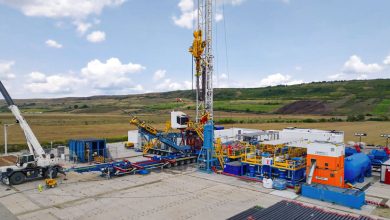USD 136 BN mergers and acquisitions worldwide in the upstream sector
The oil prices upturn, the prospects of keeping the upward trend in terms of global demand and especially the OPEC decision to cap the output have led to the revival of mergers and acquisitions in the global oil and gas industry in late 2016. Thus, at year end, the value of transactions in the upstream sector was of USD 136 billion amid the growth in the number of transactions by 34% against the previous year.
Throughout a year of major changes for the global oil and gas industry, the oil price upturn began in January 2016 and has stimulated the interest in new investments. This is what is revealed by the figures presented in the survey conducted by ‘Evaluate Energy’, one of the most important houses of financial consultancy in the oil and gas sector, released in early January 2017 under the title ‘Global upstream oil & gas M&A reached USD 136 billion in 2016’.
Intense activity in the sector
The study reveals that the mergers and acquisitions (M&A) in the upstream sector completed in 2016 totalled USD 136 billion. At first glance, the figure is lower than the one in the previous year (when the value of the mergers and acquisitions was of approximately USD 161 billion)… however, according to the ‘Evaluate Energy’ analysts, out of the transactions in 2015, the BG Group takeover by Royal Dutch Shell (USD 81 billion deal – almost half of the total), which was an absolutely exceptional transaction, should be excluded.
Having as landmark only the transactions that can be considered as ‘ordinary’, according to the above mentioned experts’ methodology, the activity of mergers and acquisitions completed in 2016 was higher by about 71% – in terms of value, and by 34% – in terms of the number of large transactions (i.e. transactions with values above USD 100 million); the number of large transactions in 2016 was 168, up from 125 in 2015 – which shows that the investors’ interest in this area has been significantly higher.
The survey notes that the highest activity was recorded in the fourth quarter, when the number and value of transactions made were well above the average; hence comes the conclusion that the OPEC decision on capping the output was a strong factor in reviving the interest (see the graph ‘The quarterly evolution of the M&A transactions’ value’). Thus, in the last three months of 2016 were registered no less than 49 large transactions (out of the 168 over the entire year); other 60 smaller transactions were completed – with values of over USD 50 million.
The fourth quarter 2016 was thus the most intense quarter of the last 10 (starting with the third quarter 2014 – i.e. when oil prices started falling), the value of transactions carried out in these three months amounted to more than USD 60 billion (out of USD 136 billion during the entire year 2016).
The data for 2016 therefore indicate a year of industry’s consolidation and recovery, ending a highly volatile 2015! Let’s recall that 2015 was the first full year since the decision made by Saudi Arabia not to respond to the price decrease… being thus the first full year in which the ‘market’ forces were actually allowed to dictate the oil prices.
In 2015 the oil was traded between a low of USD 35 and a high of USD 61/barrel, on an yearly average of about USD 49/barrel; given this background, the value of M&A transactions completed in 2015 (including the exceptional BG Group takeover by Royal Dutch Shell) was by 4% lower than the one recorded in 2014.
The US domination
The Canadian consultancy firm’s survey also emphasizes the United States dominance in the global oil and gas industry. A first reason for this is that the value of upstream M&A transactions completed in the US in 2016 (of USD 69 billion) was more than double against 2015 (of only USD 33 billion) – therefore the dynamics of activity in the US was significantly higher than the one recorded globally. A second argument showing the US industry’s decisive role worldwide is the fact that the USD 69 billion (the value of upstream M&A transactions in the US) is about half of the total value of upstream transactions worldwide.
An important impetus to this positioning of the American industry in the global perspective is given by the exploitation of shale deposits (the shale industry)! This sector of the US oil and gas industry has been heavily hit in 2015 by the fall in oil prices, the value of M&A transactions decreasing in 2015 by 75%, down to USD 13 billion (the lowest level since 2009 to date). In 2016 the evolution was almost as spectacular, but contrariwise: the value of transactions was of USD 48 billion, by 269% higher than in 2015.
The US shale industry registered a significant revival in M&A; both in the Permian Basin in western US (reference area for the oil and gas sector in the US)… but also outside it. For example, a spectacular activity was also registered, the report noted, in the Marcellus formation area (an area for shale mining in north-eastern US – a benchmark for the shale industry).
In this area in 2016 were registered transactions of USD 7.25 billion (including 13 transactions of over USD 100 million) – much larger than in 2015 when USD 0.92 billion M&A transactions were registered – and only three of them were over USD 100 million.
Moreover, the number of large transactions made in 2016 in this area (Marcellus) reached the highest level since 2010 (when 15 transactions larger than USD 100 million were concluded) until 2016.
It is also noteworthy that one of the transactions concluded last year in the Marcellus area (Rice Energy took over Vantage Energy for USD 2.77 billion) was in the Top 10 transactions globally (by value). Thus, the transaction by which Rice Energy took over the exploitation perimeters in several fields in the US (perimeters having an aggregate production capacity of 399 million cubic meters per day), was ranked sixth in the rankings (see the table ‘Top 10 M&A transactions in 2016’).
Top 10 transactions in 2016
Another characteristic of the mergers and acquisitions market in 2016 is the balance in terms of value and number of transactions that can be considered (relatively) ‘ordinary’ – namely the transactions that, by value or potential to repeat, differ from the ‘exceptional’ ones (as was the 2015 transaction by which Royal Dutch Shell took over the BG Group). Unlike 2015, in 2016 were recorded a higher number of transactions with values close to the median statistics (value that is given by the middle set of values taken into account), whereas the deviations from the median were significantly lower.
Therefore, the largest 10 transactions recorded globally in 2016 had values between USD 2.5 billion and USD 15.7 billion (see the table “Top 10 M&A transactions in 2016”); for comparison, in 2015 the extremes were significantly farther: the largest transaction recorded in the Top 10 (Royal Dutch Shell took over BG Group) was approximately USD 84 billion, the lowest value was of only USD 1.8 billion (Devon Energy took over Felix Energy – see the table “Top 10 M&A transactions in 2015”).
This statistic can be considered as an indication of an activity with a higher degree of sustainability and continuity. At the same time, we can say that we also have an indicator of reduced volatility of the activity and perceptions about the industry, which indicates a strengthening of a trend that falls into positive territory; this trend is supported by the good prospects on the market regarding the main specific indicators, such as price or the prospects for global demand.
The drivers of mergers and acquisitions market revival
The oil price and its prospects were thus mainly responsible for the return of investors’ interest (see the graph “The quarterly evolution of M&A transactions, by number”, which reveals a causal relationship between the oil price and the development in the number of mergers and acquisitions transactions).
The oil price was at the beginning of 2016 at around USD 36 per barrel and moved upward throughout the year as rumours on capping production by OPEC were gaining credibility; so that at the end of the year, oil was traded at around USD 53 per barrel – i.e. by 46% above the price early in the year (see the chart “The oil price evolution”).
However, simultaneously with the change in oil price prospects, the prospects regarding consumption have also improved. As in recent years the demand was under the significant pressure of distrust in global economic recovery, both 2015 and subsequently 2016 were years with increasing consumption!
According to EIA, IEA and OPEC estimates, the demand for liquid fuels in 2015 had a 1.5-1.8% increase – the largest contribution came from the US, Europe, China and India (and other countries in Asia-Pacific and the Middle East). In 2016 the trend continued as strongly! At least this is what the report “Short-Term Energy Outlook – January 2017”, released earlier this year by the Energy Information Administration – US government’s specialized agency (see the chart “The evolution of oil production and consumption”). The report shows that the global consumption of oil and other liquid fuels reached an average of 95.6 million barrels per day in 2016, by 1.4 million barrels per day more than in 2015 – the consumption being enhanced, as in the previous year, mainly by the demand from non-OECD economies.
Continued trend
The prospects are for a continued trend – the same report reads: for 2017 the EIA estimates an increase in global energy consumption by additional 1.6 million bpd and by 1.5 million bpd in 2018 (see the graph “The evolution of oil production and consumption”); most of the added demand in each of those two years – specifically, more than 1.2 million barrels per day – are expected to come from non-OECD economies, India and China being the main determinants.
For example, according to the EIA experts, China will have an additional consumption of 0.3 million barrels per day in 2017 and 2018 – in particular due to higher consumption of automotive and aviation fuels that will offset and outrun the decrease of diesel fuel consumption. Regarding India’s consumption, it is estimated to increase by about 0.2 million barrels per day in 2017 and 2018. The dynamics is expected to be enhanced, according to the same experts, on one hand by the increasing demand for transport fuels and on the other hand by the growing demand for raw materials for the petrochemical industry.
And the positive outlook regarding the evolution of oil and gas demand is complemented by the latest BP report, ‘BP Energy Outlook’ 2017 edition – released at the end of January, showing that global energy demand will increase by 30% until 2035, with an average annual growth of about 1.3%; the increasing prosperity of the developing countries will be the main driver, offsetting the fall in demand due to higher efficiency.
It is noteworthy that although non-fossil renewable energy sources will cover half of the additional demand during the next 20 years, the BP outlook shows that oil and natural gas (along with coal) will remain the main energy source for the global economy, accounting for 75% of the energy supply in 2035 (against 86% in 2015).
Oil demand will continue to grow by an average rate of 0.7% per year, although a gradual moderation is expected, the BP analysts say. The transport sector will continue to be the main consumer of oil (about 60% of total oil consumption in 2035), but its use as non-fuel (such as in the petrochemical industry) will take over the role of main driver in demand growth as of 2030.
In parallel, the gas consumption will register an increase of demand at a significantly accelerated pace, with an average rate of 1.6% per year and will become the second most important primary energy source in 2035.






